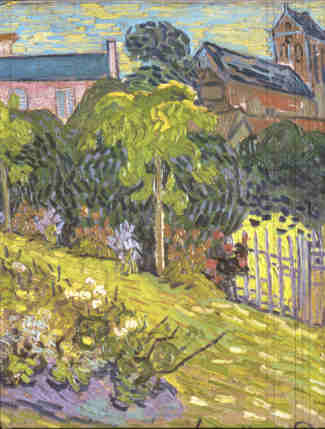Biology of Plants, Sixth Edition
 Raven, Peter H., Ray F. Evert, Susan E. Eichhorn. 2003. Biology of Plants, Sixth Edition. W. H. Freeman and Company / Worth Publishers, New York, NY. Hardcover 944 pgs.
Raven, Peter H., Ray F. Evert, Susan E. Eichhorn. 2003. Biology of Plants, Sixth Edition. W. H. Freeman and Company / Worth Publishers, New York, NY. Hardcover 944 pgs.
A widely used college textbook that covers the botanical world from molecules to ecosystems. Filled with beautiful, full color artwork and many photographs and drawings on every page this book is not only an introduction to Botany but is also a high example of modern publishing art. There is no title on the front cover to detract from van Gogh's painting and the same aesthetic standards are evident on every page. The text itself is clear and interesting, not too dry, and never compromising clarity and accuracy. The first few sections cover the cell, bioenergetics ( at a basic level), and genetics and evolution.
The fourth section, "Diversity", really shines. The authors present a detailed survey of the major divisions of traditional botany each in their own chapter. They include the bacteria and viruses, fungi, protista and algae. The chapter-wise survey continues by describing the bryophytes, seedless vascular plants, gymnosperms and angiosperms. Each chapter includes a review of paleobotanical information and systematics for that taxon as well as detailed anatomical drawings, life cycle drawings, and many photos of representative species. If you love learning about plants, you won't be able to put the book down while studying these chapters. This section, which is over one quarter of the book, can be studied without wading through the molecular biology of the opening chapters, much of which would be covered in a ordinary introductory biology text.
Its easy to use superlatives while describing this book. Unfortunately, that includes the price. Its listed new for $95.99 USD on Amazon, but used copies can be bought for $65.00 USD. Botany changes so rapidly these days (and for the past fifty years) that you must have the latest edition. Remember what Erasmus (1466-1536) said "When I get a little money, I buy books. If there's anything leftover I buy food and clothes." He couldn't have bought a book like this for any price. The best strategy is to visit your library, preferably a university library, but eventually you will need to have your own copy.